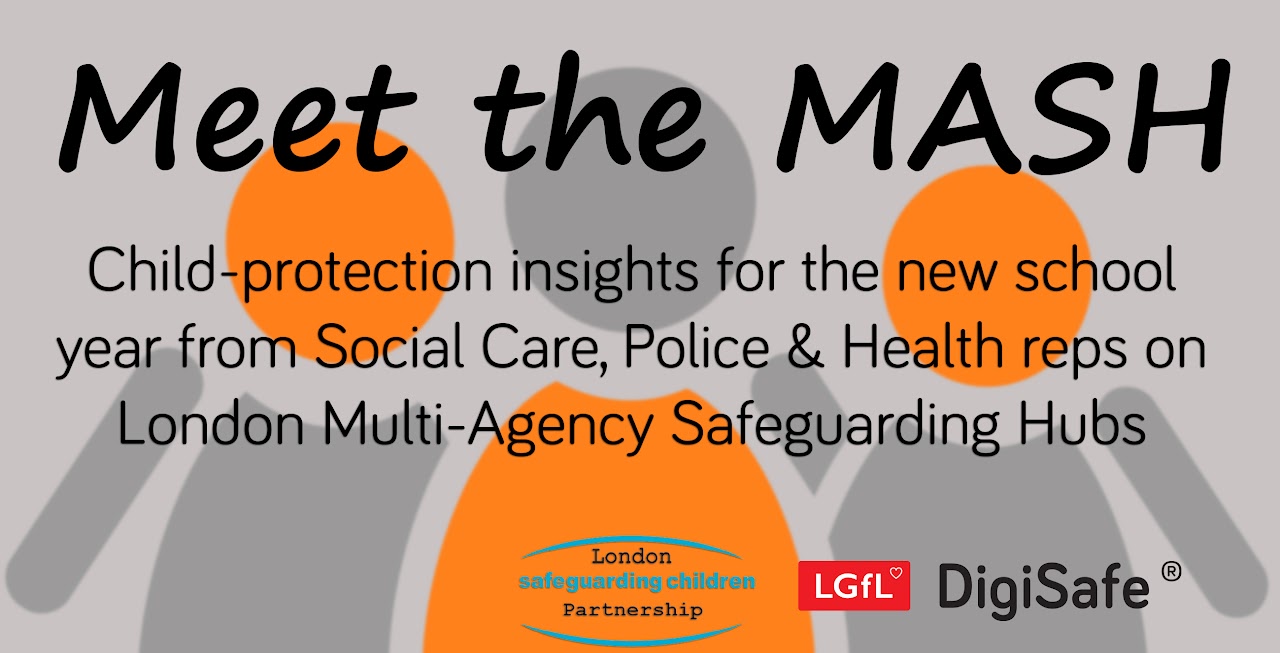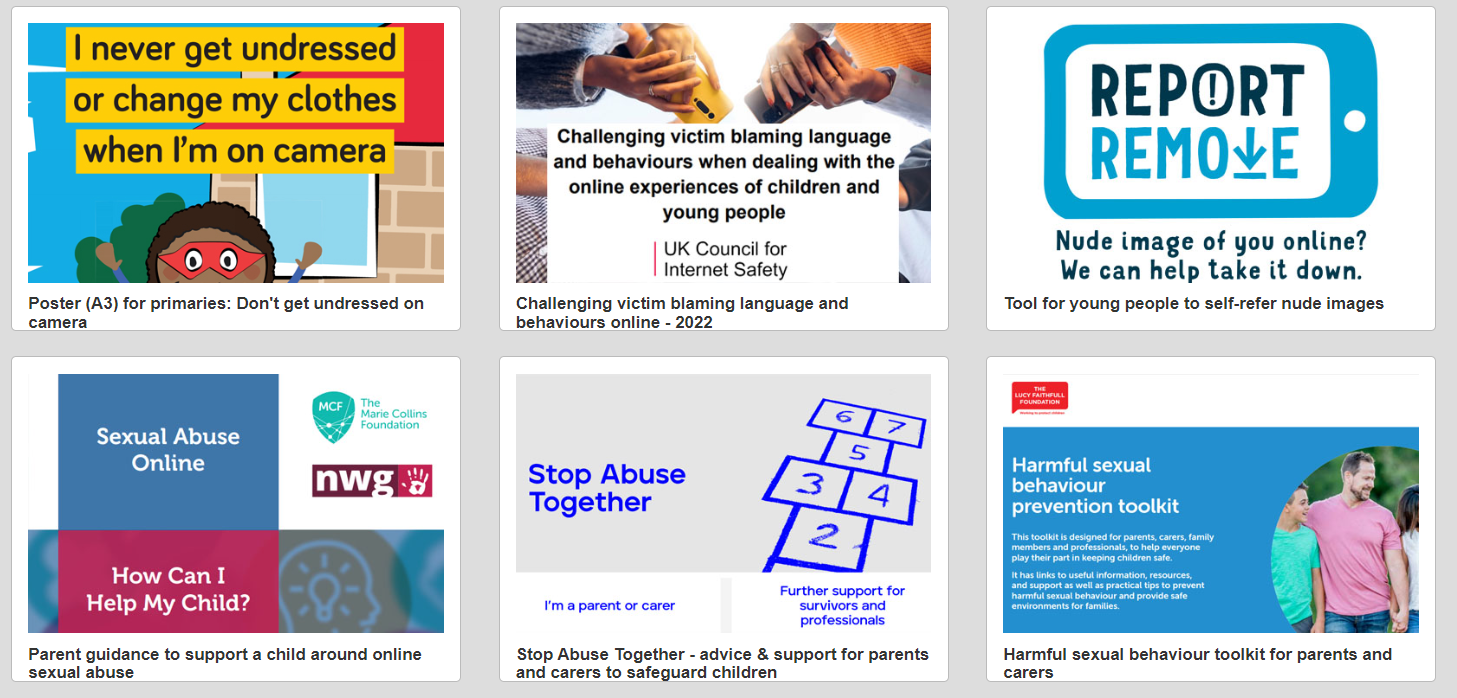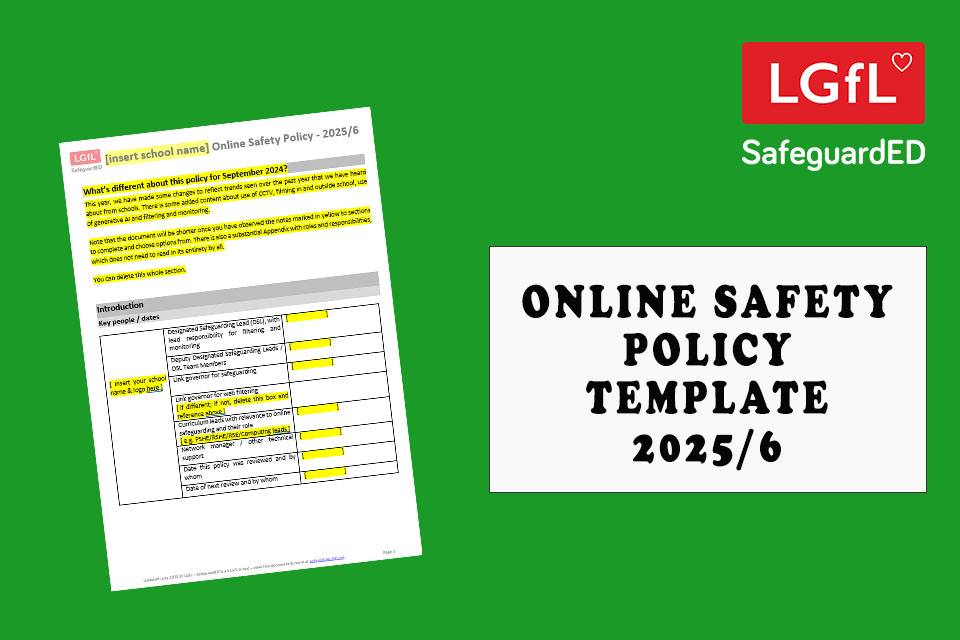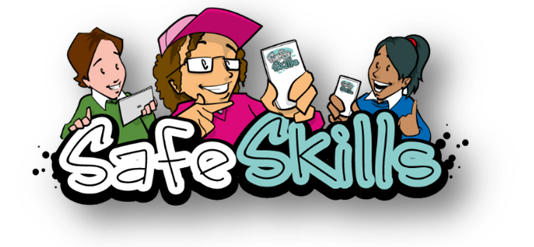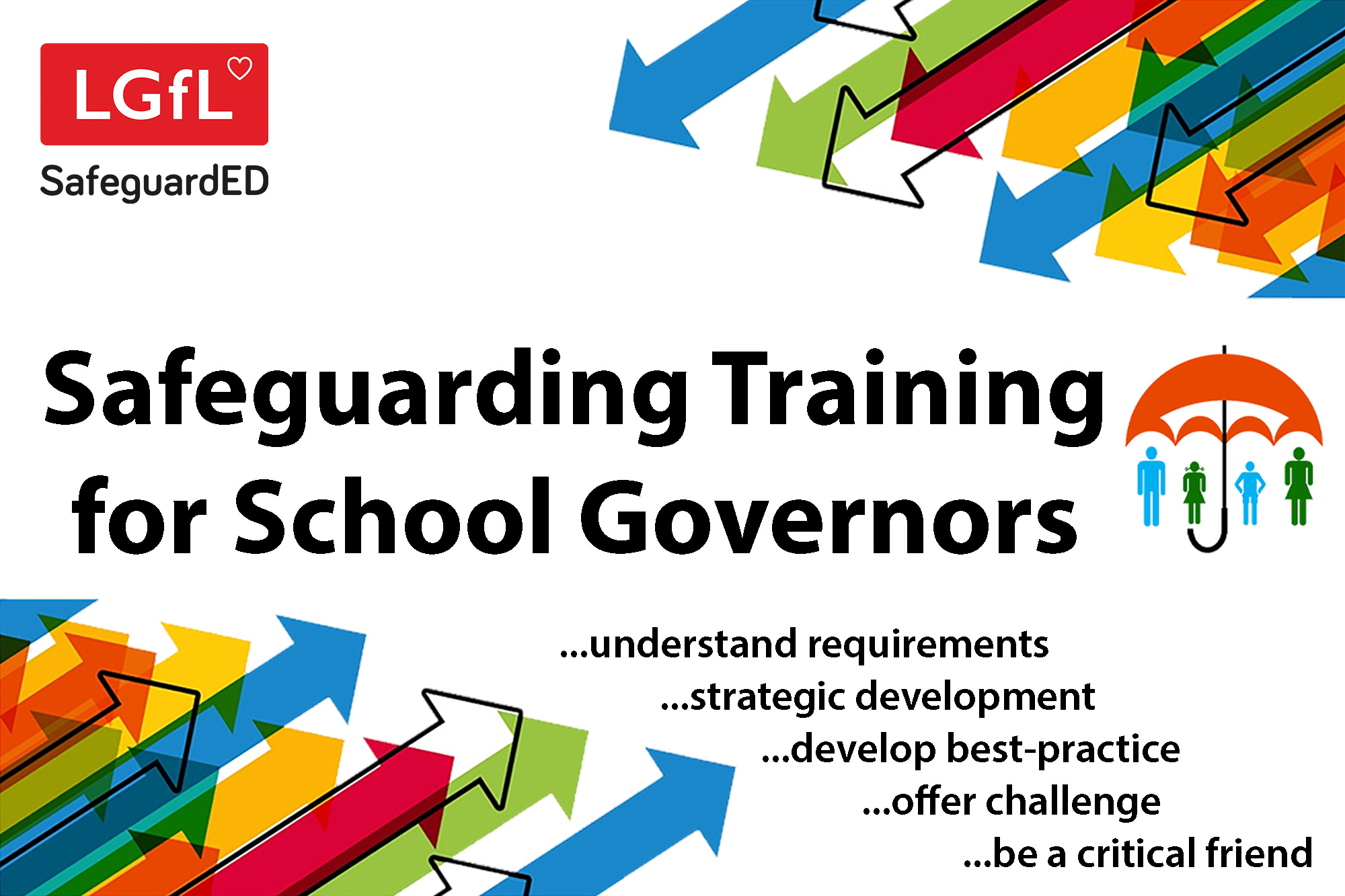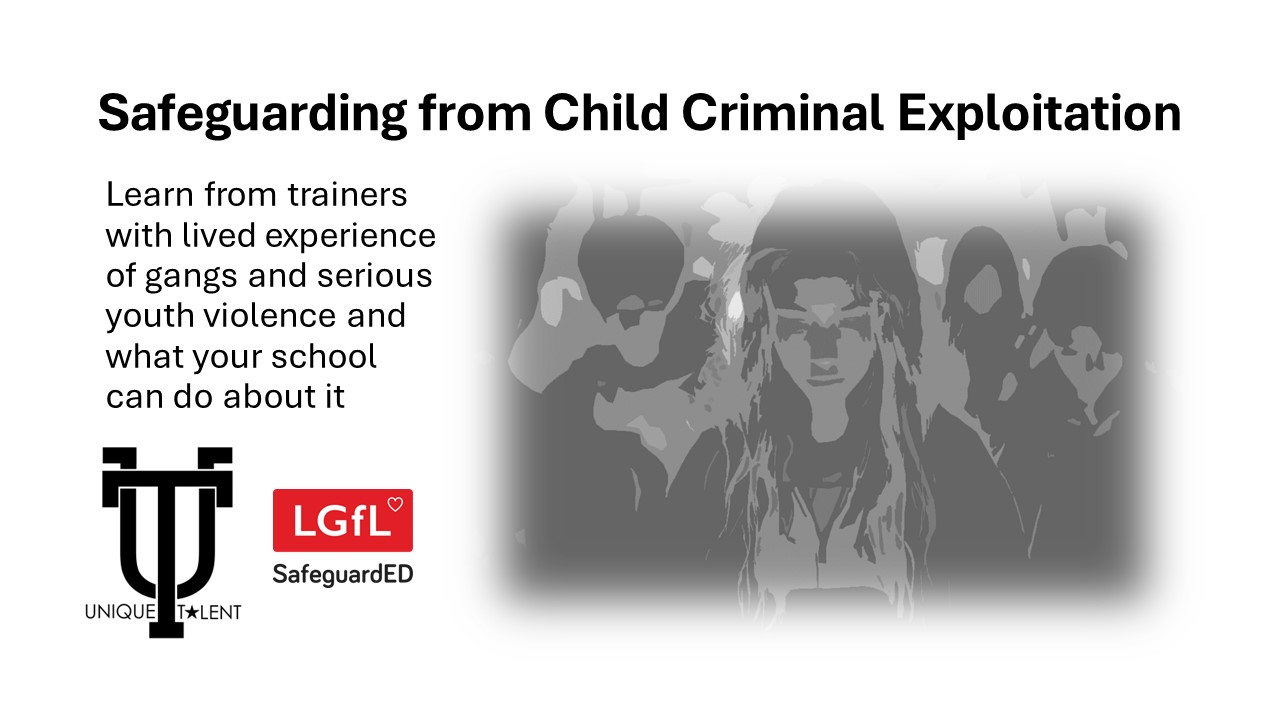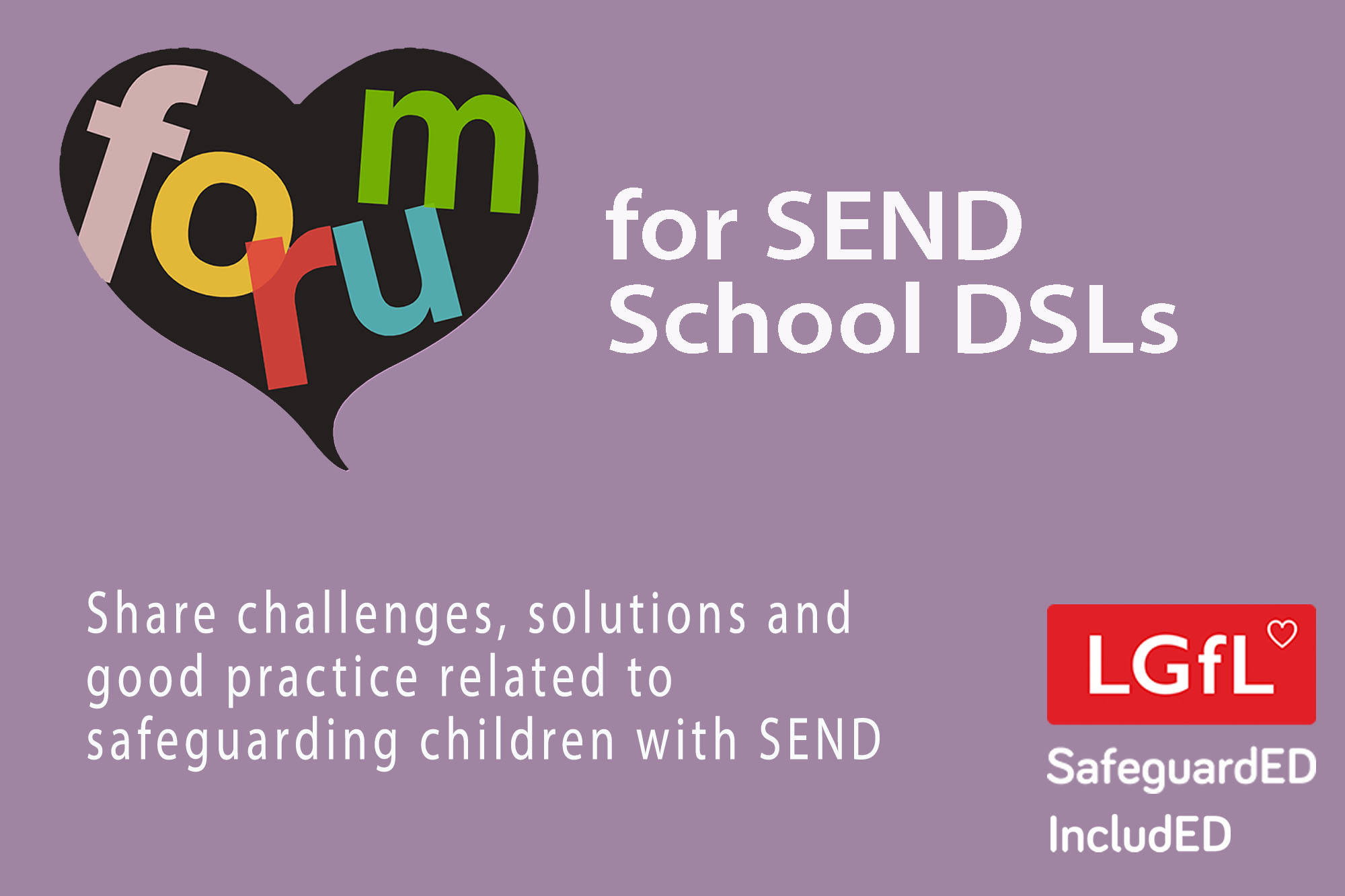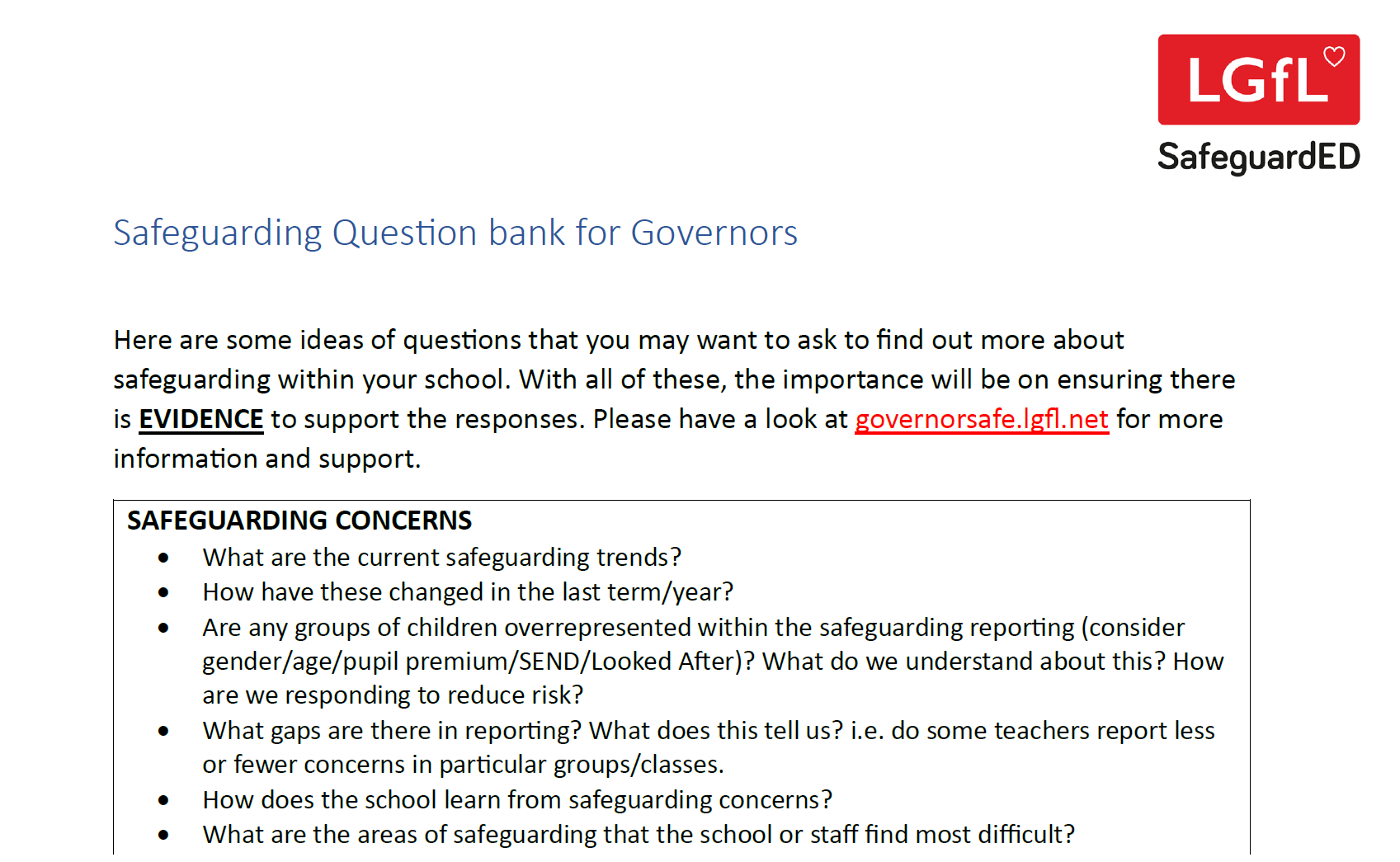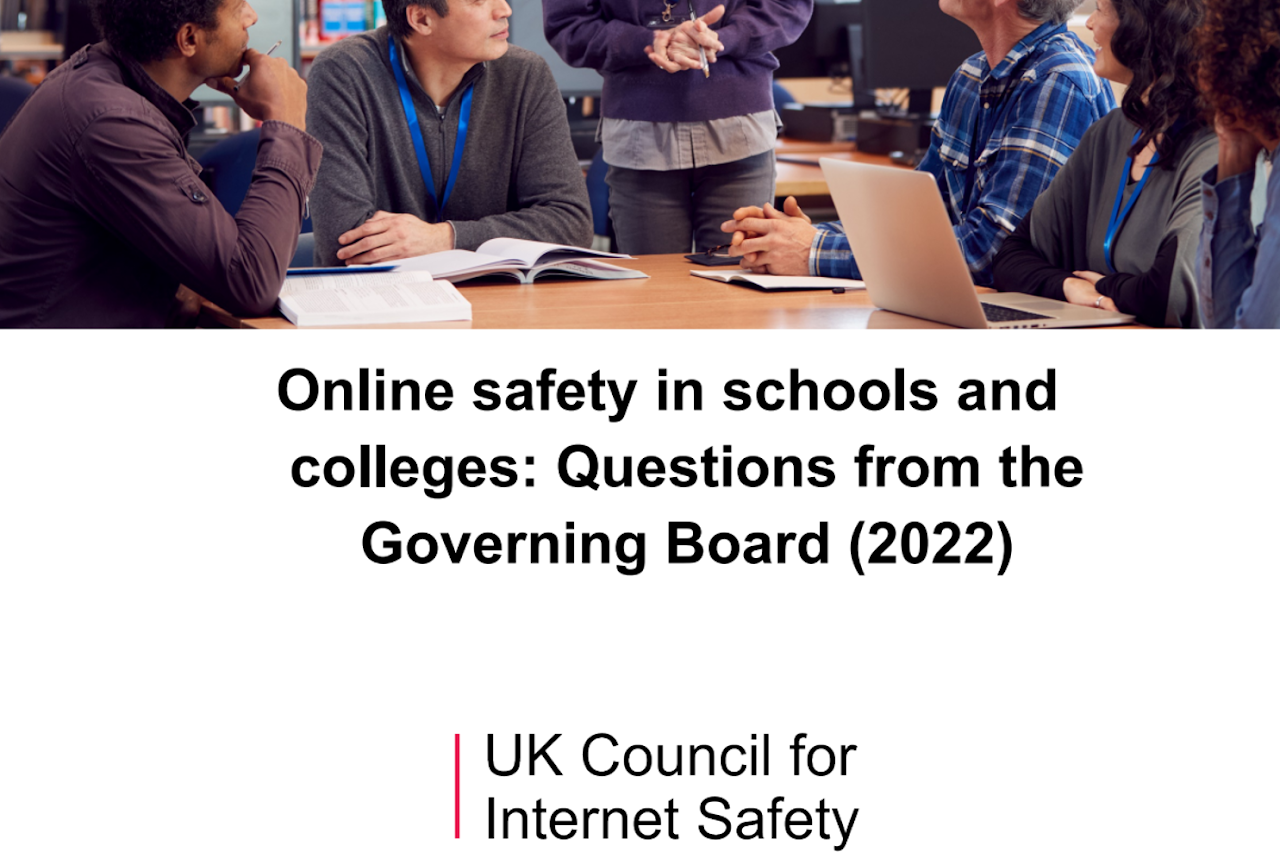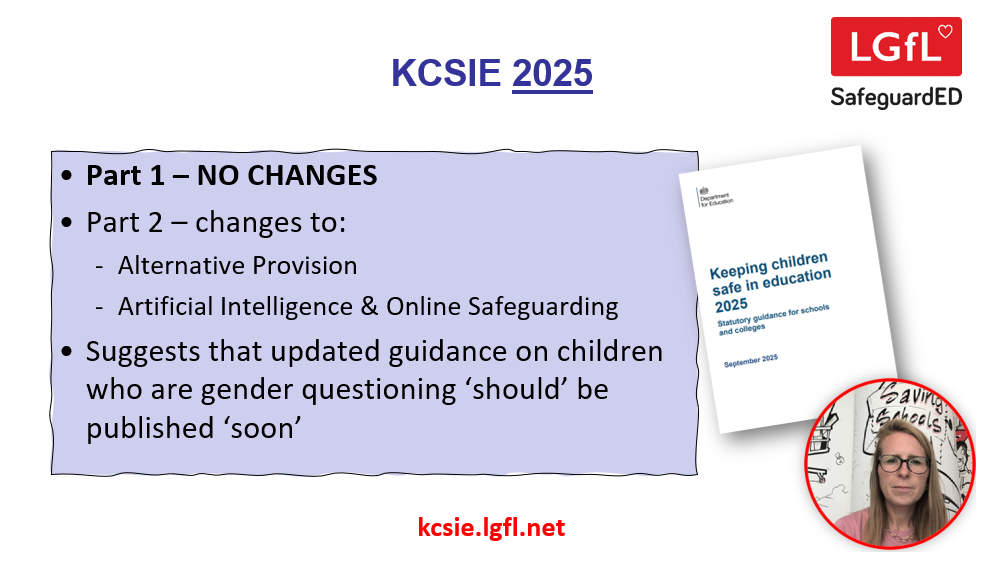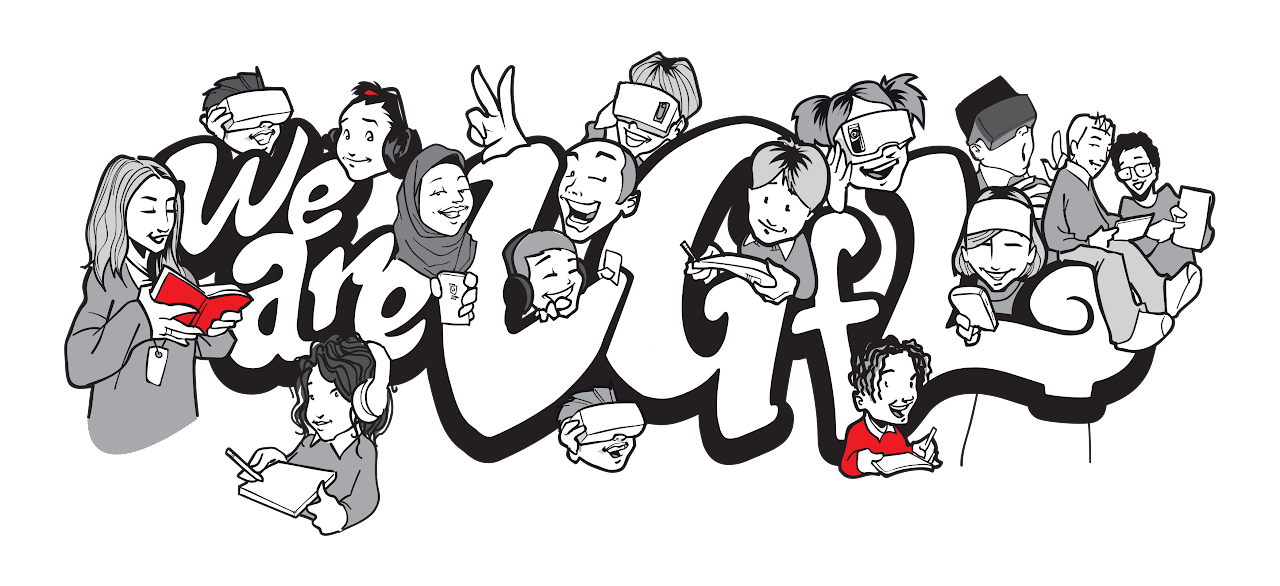Safeguarding
Ofsted School Inspection Toolkit
*** September 2025 Update ***
How do Ofsted Inspect Safeguarding?
Ofsted have published their revised Education Inspection Framework, and the new accompanying School Inspection Toolkit. The following slides provide a general overview of the changes to the EIF and the impact on inspecting safeguarding.
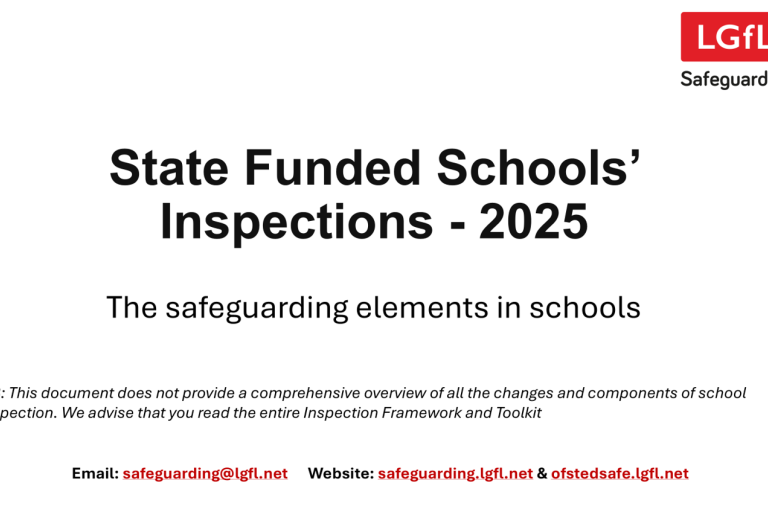
What does Ofsted say about inspecting safeguarding?
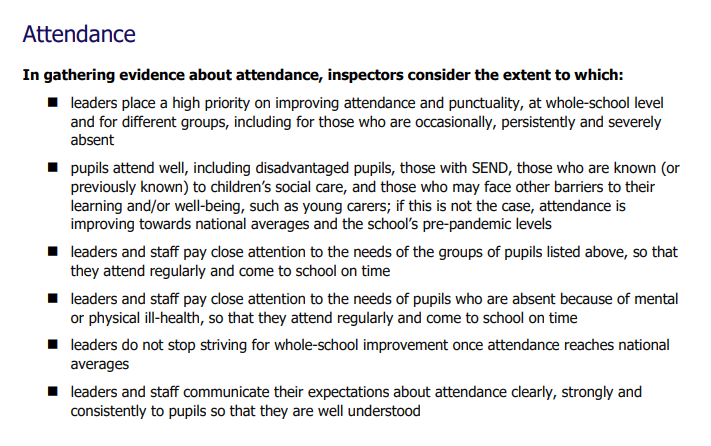
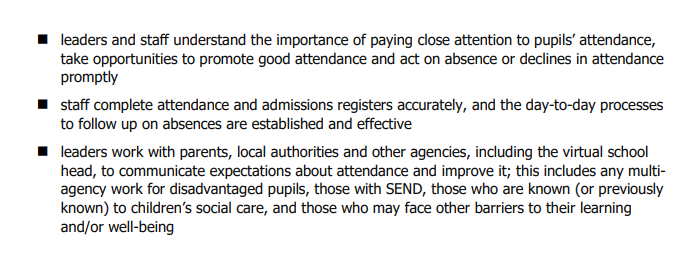
Ask Yourself/Colleagues:
- Are you familiar with 'Working Together to Improve Attendance'?
- What is your school's approach to maintaining high expectations around pupil absence? How do you ensure all staff share this approach?
- What strategies have you implemented to address where there are pupils who are persistently absent?
- How do you communicate your expectations with regard to attendance to parents/carers?
- Are your safeguarding and attendance policies and procedures aligned, to identify where attendance issues are a safeguarding concern?
- Do you monitor attendance regularly? Who does this? Do you have clear response procedures to absenteeism?
- What does your data tell you? In particular, are there any trends around SEND children, children who have a social worder, young carers, gender, etc?
- How do you share information with your governors about pupil absence?
- Is your policy up to date and reflective of practice?


Ask Yourself/Colleagues:
What steps have you taken to develop a culture of safeguarding at your school?
How can you show it is embedded holistically as part of a whole school approach and not just a tickbox exercise?
How have you collected evidence of your culture? What do stakeholders tell you - both formally and informally?
Is the safeguarding culture as described in your Safeguarding policies, reflective of day to day practice?
What is the impact of your safeguarding culture? How do you know it is effective?
What agreements/measures are in place to share information effectively with key agencies e.g. Children's Services or when children transition to the next setting?
How have you ensured pupils and parents know how and who to raise a concern to? Does your data show that this happens regularly?
Helpful Resources & Support:

Ask Yourself / Colleagues:
What steps have you taken to ensure staff feel and are confident in delivering statutory RSHE in line with DfE guidance?
How have you captured pupil voice and adapted your curriculum to ensure ALL pupils:
Feel safe and listened to?
Feel that the curriculum is appropriate and effective?
Have an understanding of the Equalities Act and protected characteristics?
Are aware of reporting channels, both at school and beyond?
Can you evidence that your governor(s) are strategically challenging safeguarding across the school?
How have you differentiated your curriculum to meet the needs of all pupils?
Helpful Resources & Support

Ask Yourself / Colleagues:
What steps have you taken to ensure staff are confident to challenge child on child abuse and not dismiss discrimination, bullying and sexual harassment as banter?
How is this reflected in your policies? Can you show that policy reflects (and informs) practice?
Can you demonstrate that all pupils have signed an updated AUP? ...and staff, volunteers, governors?
Are your pupils confident that inappropriate behaviour will not be tolerated - is this message consistent across the curriculum and in practice?
Do you have robust procedures in place to risk assess concerns relating to child-on-child abuse?
What does your data tell you about child-on-child abuse in your setting? Are there any gaps in reporting that need to be explored? Is your data granular enough to see particular trends in types of harm (sexist, racist, homophobic etc) and groups of pupils?
What local partners do you work with to prevent child-on-child abuse both within school and outside of school?
Helpful Resources & Support

Ask Yourself / Colleagues:
Do DSL, SEND and curriculum teams meet to discuss the particular vulnerabilities of pupils with SEND, both in general and for the specifics of learners in your school?
How does safeguarding provision within the curriculum (most likely RSHE) ensure it meets the specific needs of learners with SEND?
Are learners with SEND in your school more trusting of strangers or otherwise more susceptible to grooming? If so, what mitigations can you put in place?
Are parents involved in discussing safeguarding issues? Equally, do pupils with SEND have routes other than via parents to disclose which are accessible to them?
Helpful Resources & Support

Ask Yourself / Colleagues:
Have you got enough staff who have completed safer recruitment training including a governor, so that 1 person who has completed the training is on every panel?
What are your processes for reviewing the Single Central Record? How effective are these? Does a governor also ensure that the SCR is checked?
Do you have clear procedures for safer recruitment that are consistently implemented?

Ask Yourself / Colleagues:
Have all governors completed safeguarding training that is strategic and helps them to carry out their roles? Is there evidence of this?
Is there evidence that all governors have completed training in relation to Prevent?
Have they all read the latest version of KCSIE (all of it) and are they aware of the updates?
Have governors read the relevant sections of the Governance Handbook that relate to safeguarding?
Is safeguarding addressed at governor meetings? Is this evidence
Does your safeguarding governor meet regularly with the DSL and have more training to enable the role and related conversations?
Helpful Resources & Support
What does it look like when the safeguarding grade is 'met'?
The following is taken from the School Inspection Toolkit. Read each statement and reflect on to what extent each of these is true of your school. As always, what evidence do you have? How can this be triangulated? What gaps exist in your safeguarding practice?
Leaders have established an open culture in which safeguarding is everyone’s responsibility. Multi-agency working is effective. There is strategic oversight of all aspects of safeguarding and promoting the welfare of pupils. Leaders actively try to learn from safeguarding cases and incidents and take any action needed.
Pupils are kept safe and feel safe. Their voices are heard, including the voices of pupils who are not on the school site (whether long term, temporarily or for part of the school day). Teaching pupils about how they can stay safe and when they may need help is embedded across the curriculum. Pupils and parents know who to go to for support.
All staff are vigilant and carry out their responsibilities effectively to keep pupils safe. Staff understand the signs of possible safeguarding concerns. They respond by following the school’s systems confidently and consistently.
Leaders fulfil their responsibilities in relation to child-on-child violence. This includes (but is not limited to) bullying, physical abuse (including physical assault and harm (or the threat of harm) with a weapon), sexual violence and harassment, and domestic abuse in pupils’ own intimate relationships (teenage relationship abuse).
Leaders know and fulfil the statutory requirements for safeguarding. These include managing safer recruitment, reporting, referrals, recordkeeping and the ‘Prevent’ duty.
The school has clear and accessible policies and procedures that keep pupils safe. Leaders are receptive to challenge and are reflective about their own practices. This means that the impact of safeguarding policies, systems and processes is kept under continual review.
Leaders ensure that staff’s work is monitored and that they get appropriate supervision and support. The conduct and behaviour of staff are appropriate.
Leaders follow local authority procedures in managing safeguarding concerns or allegations about adults. Where appropriate, leaders have resolved any minor safeguarding issues identified during the inspection or are taking steps to resolve them.
Other Mentions of Safeguarding
Safeguarding is integral within the Inspection Toolkit. For example there are sections on SEND pupils and children who have (or previously had) a social worker, both of whom we know can be more vulnerable to abuse and harm. So the DSL will want to be aware of these sections of the Inspection Toolkit and consider for example, how they work with the SENCo and Designated Teacher for Looked After Children? How are concerns related to these children assessed holistically, with a trauma informed response and with professional curiosity to ensure that safeguarding concerns are recognised and acted upon a

